How Long Do Decks Last?
The lifespan of a deck is influenced by several key factors, including the type of material used, regular maintenance practices, and prevailing environmental conditions. Durable materials like pressure-treated wood, cedar, and composite decking can last longer than softer woods. Regular cleaning, sealing, and inspections extend the deck's life, while weather elements like rainfall and sunlight can reduce its longevity. Understanding these factors is essential for maintaining a deck; further details on material types, maintenance strategies, and environmental impacts can provide a more thorough understanding.
Expert Highlights
- Deck lifespan varies significantly based on the type of material used, with durable materials like composite and pressure-treated wood lasting longer.
- Regular maintenance, including cleaning, sealing, and inspections, can extend the lifespan of a deck.
- Weather conditions such as rainfall, sunlight, and extreme temperatures can reduce deck longevity.
- The quality of construction and adherence to building codes is crucial for ensuring the durability of a deck.
- On average, well-maintained decks can last from 15 to 30 years, depending on the material and environmental conditions.
Factors Influencing Deck Lifespan
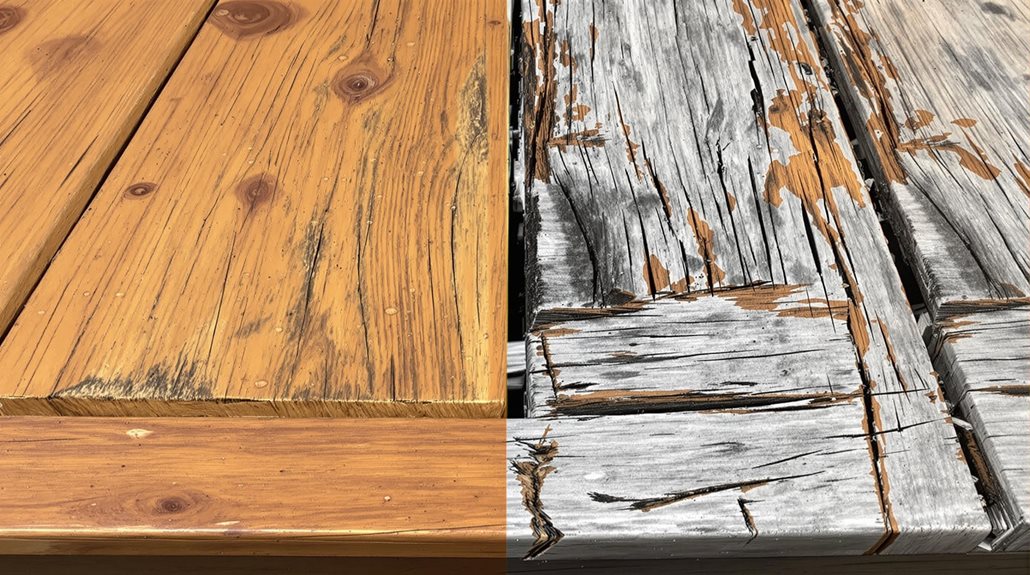
How long a deck lasts is greatly influenced by several key factors. The type of material used in its construction plays a notable role.
Decks made from durable materials like pressure-treated wood, cedar, or composite materials tend to last longer than those made from softer woods. Maintenance is another essential factor; regular cleaning, sealing, and inspection can extend the lifespan of a deck.
Weather conditions also impact deck longevity. Areas with high rainfall, intense sunlight, or extreme temperatures can reduce the life of a deck more quickly.
Additionally, the quality of construction and adherence to building codes can markedly influence how long a deck will last. Proper installation and regular upkeep are essential for maximizing the lifespan of any deck.
Working with expert deck builders ensures proper construction techniques and material selection for optimal deck durability.
Material Types and Their Durability
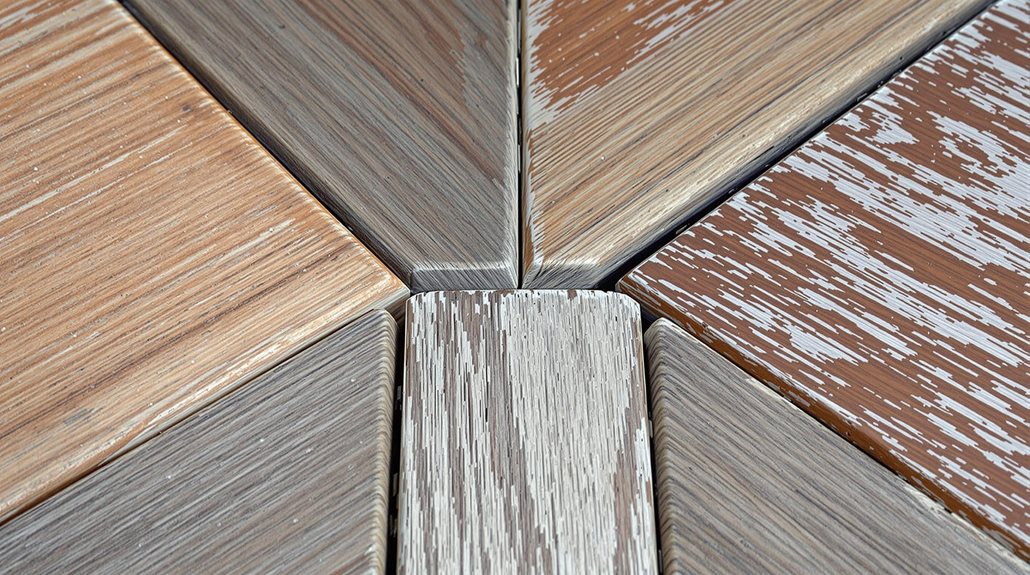
The choice of material is a critical determinant in the durability and longevity of a deck. Different materials offer varying levels of resilience and maintenance requirements.
Wood, for instance, is a traditional choice but can be prone to rot, insects, and weather damage if not properly treated. Pressure-treated wood can extend its lifespan but may contain chemicals that some homeowners prefer to avoid.
Composite decking, made from a blend of wood fibers and plastic, offers enhanced durability with minimal maintenance. It resists rot, insects, and fading better than traditional wood but can be more expensive.
Metal decks, though less common, are highly durable and resistant to elements but may require additional structural support and can be noisy during rainfall.
Each material type has its pros and cons, making it important to weigh both the initial cost and long-term maintenance needs when selecting the best option for your deck.
Leading manufacturers like TimberTech AZEK® produce composite materials specifically engineered to withstand diverse weather conditions while maintaining their appearance.
Impact of Maintenance on Deck Longevity
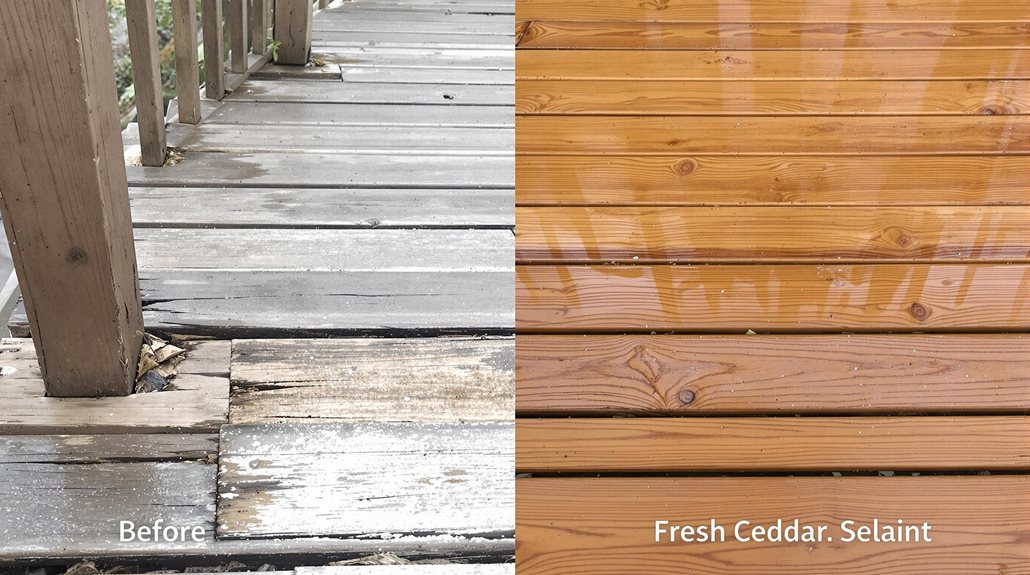
Regular maintenance is essential for extending the lifespan of a deck, regardless of the material used. Routine inspections help identify and address minor issues before they become major problems.
Cleaning the deck regularly removes dirt, debris, and mold that can damage the surface over time. Applying a protective sealant or stain can shield the wood from weathering and UV damage, while also enhancing its appearance.
Proper maintenance also includes ensuring that the deck's structural elements are secure. This involves checking for loose boards, damaged posts, and corrosion on metal components.
Professional deck builders recommend using composite boards for a more durable, low-maintenance solution that resists staining and mold growth.
Environmental Conditions and Their Effects
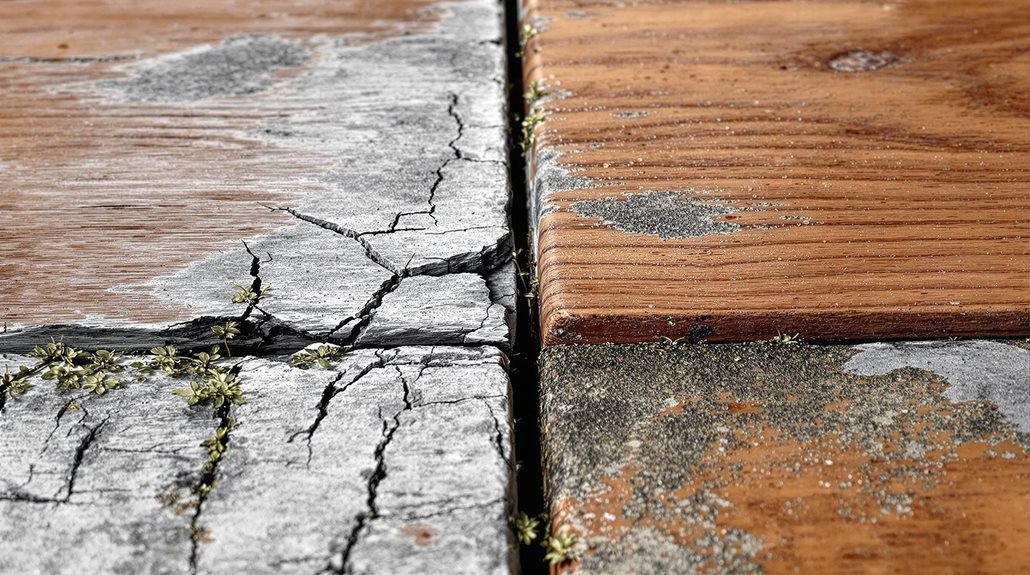
Environmental conditions considerably impact the longevity of a deck, influencing its durability and overall condition.
Weather elements such as rain, snow, sunlight, and extreme temperatures can degrade the materials used in deck construction. Moisture from rain and snow can cause wood to rot or warp, while intense sunlight can lead to fading and cracking of finishes. High winds and hail can also cause physical damage to the structure.
Regions with high humidity or frequent rainfall require more robust maintenance to prevent decay. In contrast, arid climates may reduce the risk of moisture-related issues but can still pose problems due to intense sunlight.
Understanding these environmental factors is essential for choosing the right materials and maintenance strategies to extend the life of your deck.
Working with professionals who understand custom deck solutions can help ensure your deck is built to withstand local weather challenges.
Signs of Deck Deterioration and Repair Needs
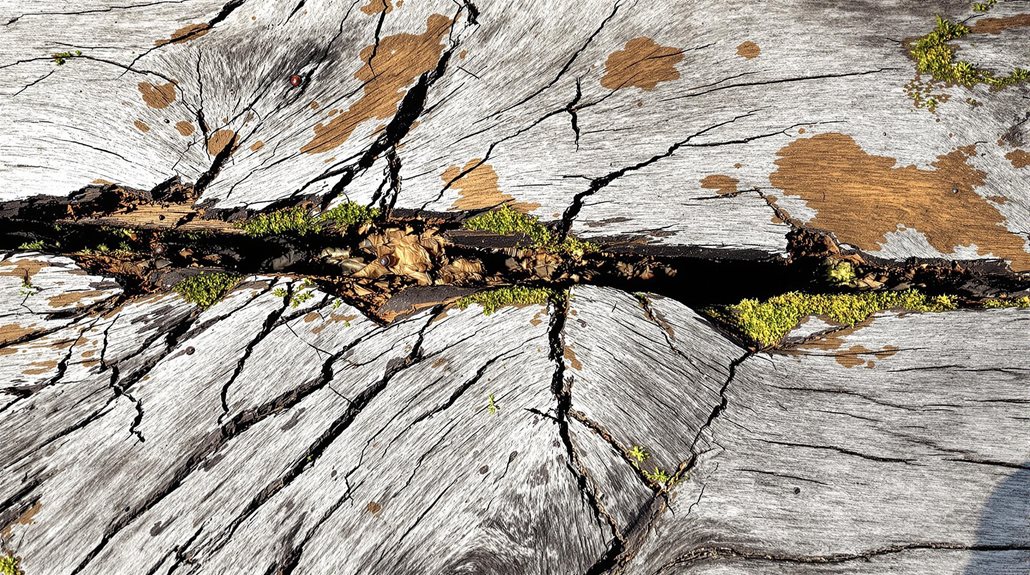
Deck deterioration can manifest in various ways, making it essential to identify signs of wear and tear early on.
Regular inspections help in detecting potential issues before they become major problems.
Based on experience with contemporary designs, deterioration patterns can vary significantly depending on the materials and construction methods used.
- Cracks and Splinters: Visible cracks or splinters on the deck boards indicate wood degradation.
- Loose Fasteners: If screws or nails are loose, it can lead to structural instability.
- Rot and Mold: Presence of rot or mold suggests water damage and requires immediate attention.
- Sagging or Uneven Surfaces: Any sagging or unevenness in the deck surface indicates potential structural issues.
Frequently Asked Questions
Can a Deck Be Rebuilt Without Removing the Old Foundation?
Rebuilding a deck without removing the old foundation is possible if the existing foundation is still structurally sound. Inspect the foundation for any damage or deterioration before proceeding with the rebuild to guarantee safety and stability.
How Often Should I Inspect My Deck for Safety?
Regular deck inspections are essential for safety. Ideally, inspect your deck at least once a year, or more frequently if it is exposed to harsh weather conditions or heavy use. Check for rotten wood, loose fasteners, and structural integrity.
Are There Specific Building Codes for Deck Construction?
Specific building codes for deck construction exist to guarantee safety and durability. These codes, often set by local authorities, cover aspects such as material selection, structural integrity, railing height, and spacing. Compliance is mandatory to prevent accidents and guarantee longevity.
Can I Use Composite Decking Over an Existing Wood Deck?
Using composite decking over an existing wood deck is possible, but it requires careful inspection and preparation. Verify the underlying structure is stable and meets local building codes to support the added weight of composite materials.
What Are the Best Practices for Deck Lighting Installation?
When installing deck lighting, guarantee proper wiring and grounding to avoid safety hazards. Choose weather-resistant fixtures and place them strategically to enhance visibility and ambiance. Follow local electrical codes and consider energy-efficient options like LED lights.
Expert Final Thougts
The lifespan of a deck is influenced by several key factors, including the type of material used, the level of maintenance it receives, and the environmental conditions it is exposed to. Properly maintained decks made from durable materials can last for decades, while neglect and harsh environments can greatly shorten their lifespan. Regular inspections for signs of deterioration are essential to extend the life of a deck and guarantee safety.






